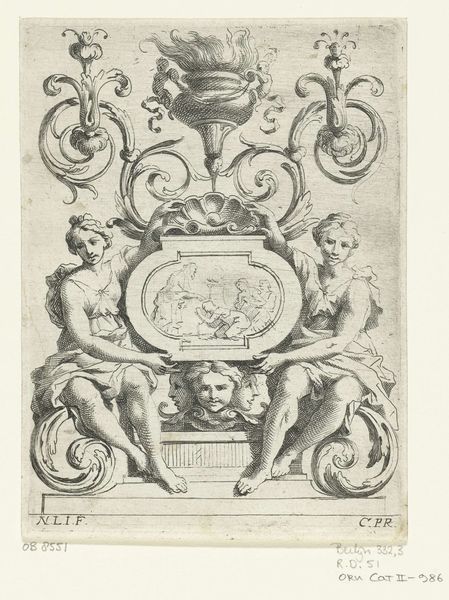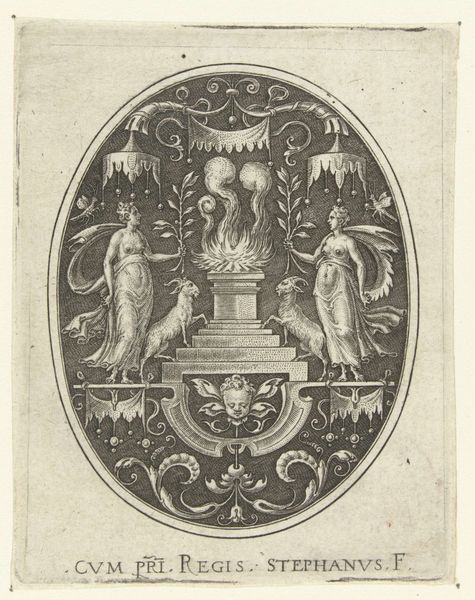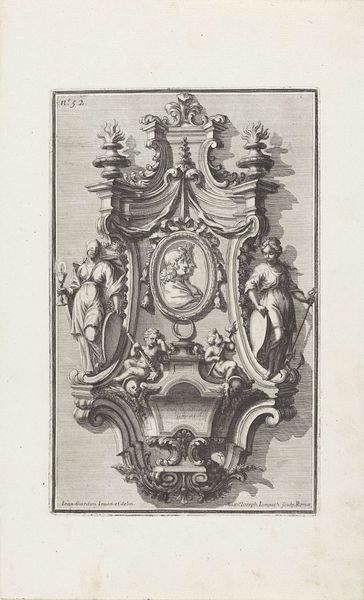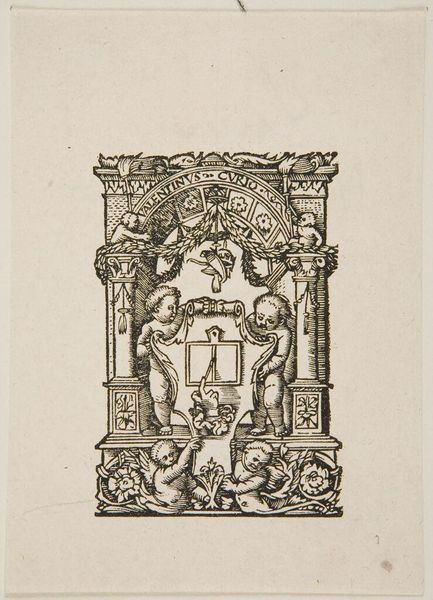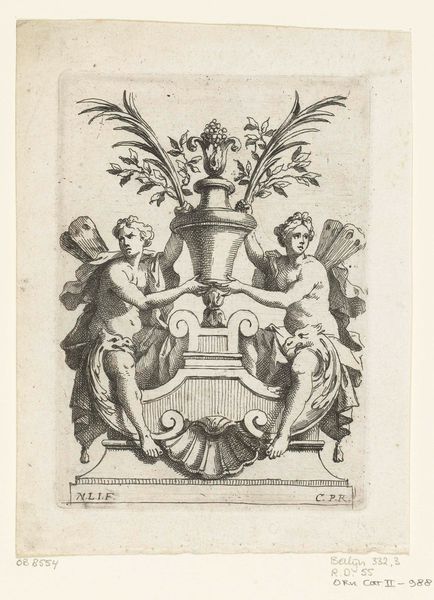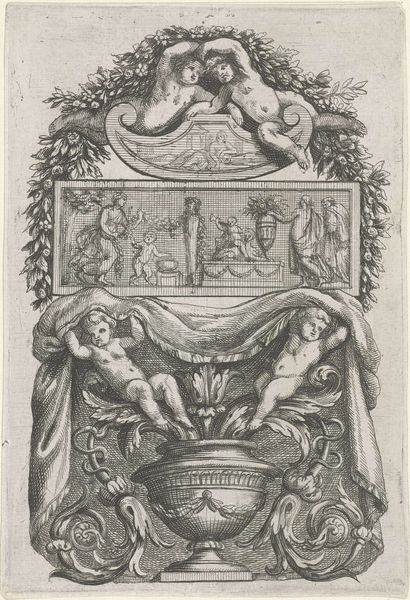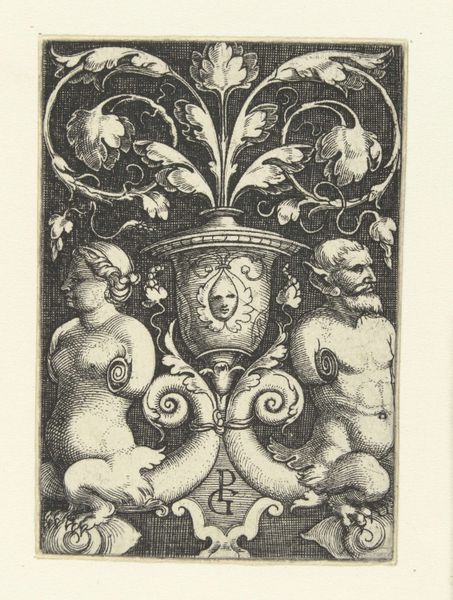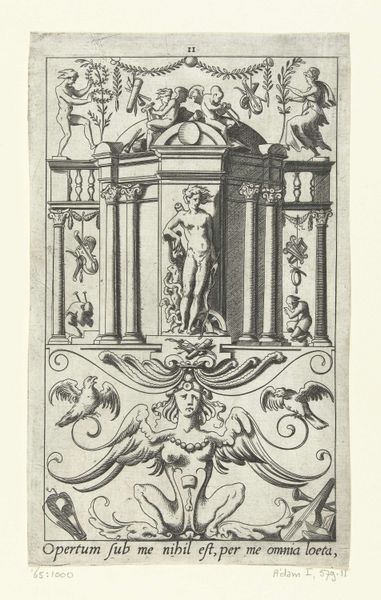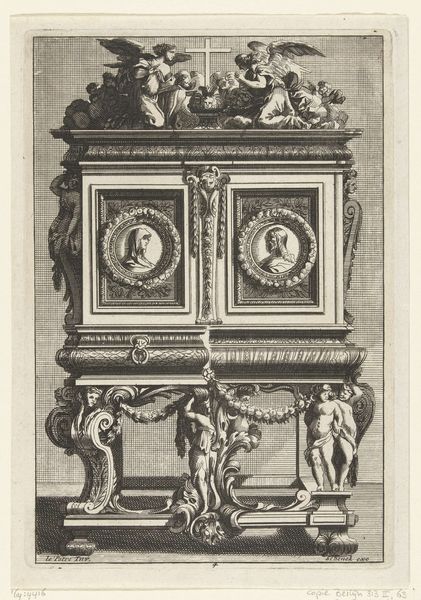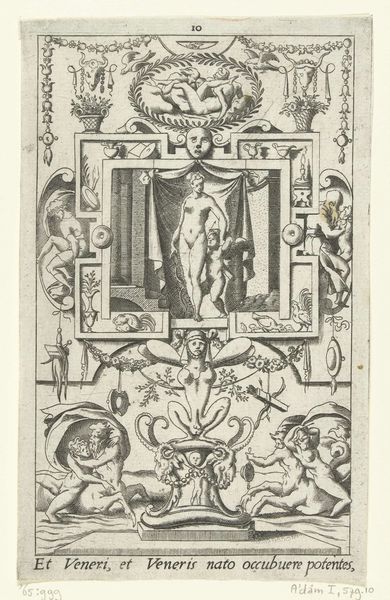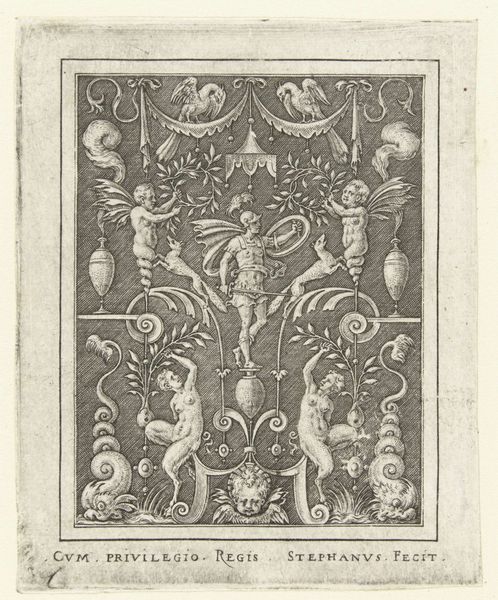
print, engraving
#
allegory
#
baroque
#
pen drawing
# print
#
classical-realism
#
figuration
#
line
#
history-painting
#
engraving
Dimensions: height 145 mm, width 108 mm
Copyright: Rijks Museum: Open Domain
Curator: Ah, the Nicolas Pierre Loir print, "Two Women Beside an Urn", dating from around 1660 to 1670. It's currently held here at the Rijksmuseum. Editor: My initial impression is... intense. A funerary urn crowned with fire and entwined with serpents—it all feels incredibly symbolic and performative. Like mourning as a grand, theatrical event. Curator: Precisely! The engraving shows two women, draped in classical garb, flanking an elaborate urn. It's pure baroque, a heady mix of allegory and dramatic flourish. What stands out to me is the intricate detail Loir achieves using just lines. You can almost feel the texture of the stone, the weight of the drapery. It’s masterly! Editor: It's interesting that you highlight the material feel because it looks so fragile at first glance. Consider that the printmaking process was likely collaborative. Someone had to prep the copperplate, another the paper, someone oversaw the press... the end result is almost immaterial, but that's the trick: it takes a lot of heavy work to look like it's floating. Curator: And consider who such prints were created for. Not necessarily to adorn homes like paintings, but to disseminate ideas, designs. Look at those stylized palmettes, the laurel wreaths... they would serve as models, inspiring countless craftspeople in various media. It makes the artist a key influencer. Editor: Right. The artist's "hand" almost becomes beside the point when it circulates so widely, mediated through other hands and tools. I wonder, what was the societal significance of urns during this period? Mass mortality from the plague had an effect in European cultures; they likely held a new resonance beyond simply remembering ancestors or commemorating nobility. Curator: That's a poignant observation! I hadn't thought of that, although in classical art urns typically represent sorrow. Those intertwined serpents aren't merely decorative—they suggest hidden depths of meaning, possibly linked to themes of mortality and renewal. And yet the women stand so serene, so accepting. There’s a certain dignified composure to their grief. Editor: Indeed. A designed grief, ready for export. Now, thinking about modern consumer culture, perhaps we need to look a little bit at who will possess these images in the future, to ensure that their material construction does not come at too high a social and economic cost. Curator: It brings another dimension, I think, into understanding its making. Thank you, the print rewards us as an artefact.
Comments
No comments
Be the first to comment and join the conversation on the ultimate creative platform.
